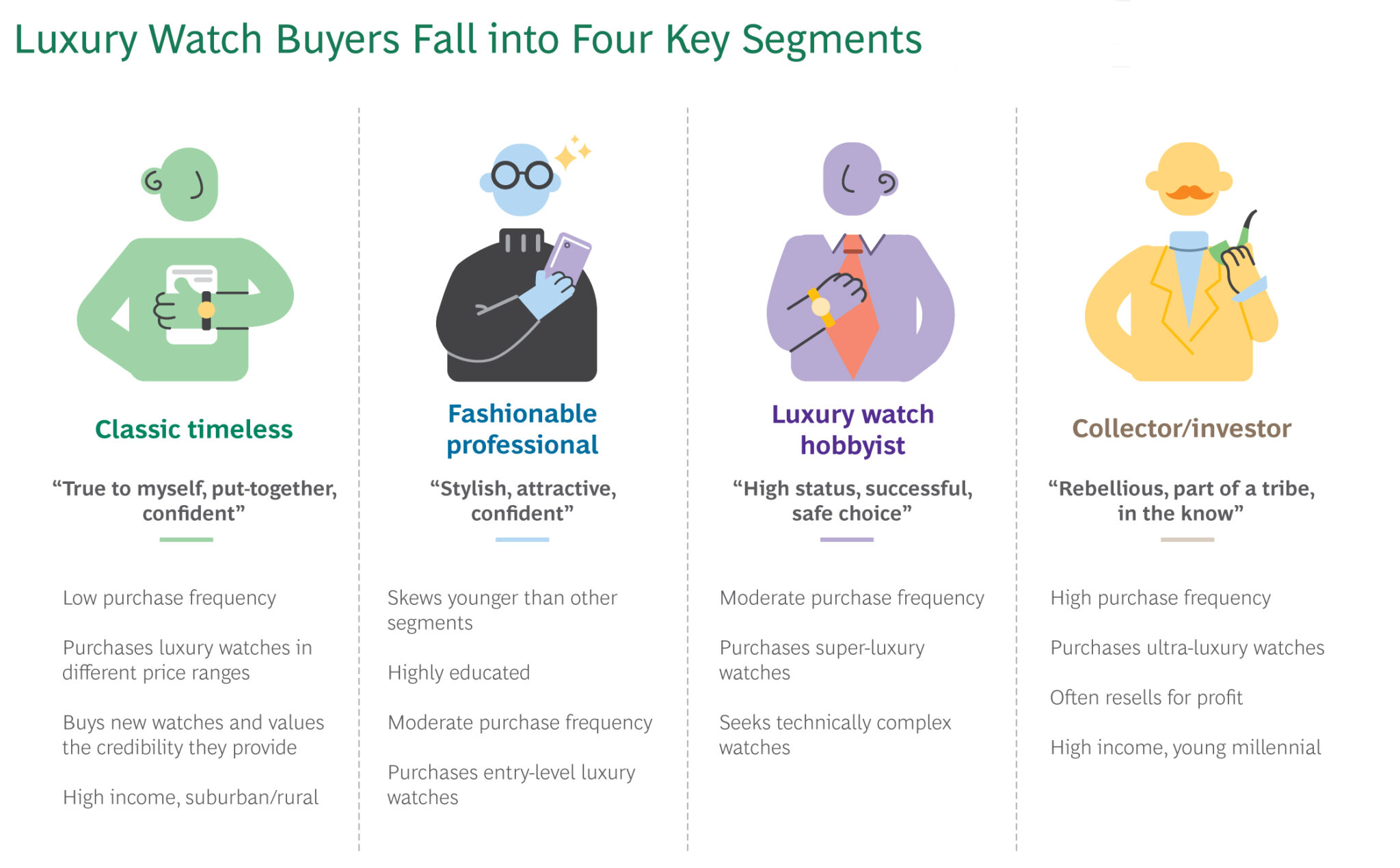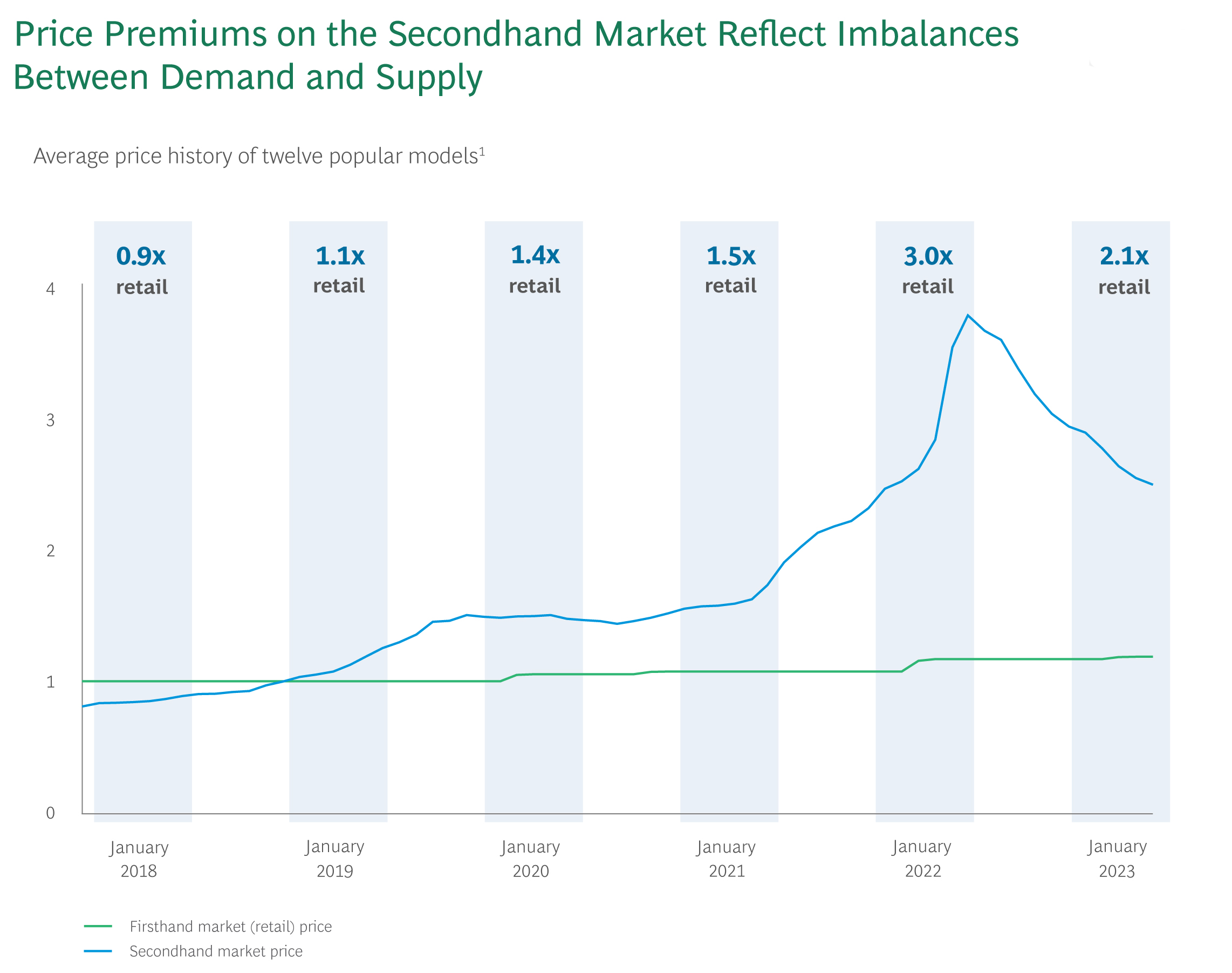Twelve months ago, as we approached the first Watches and Wonders Geneva show since the pandemic, the industry was in a jubilant mood.
Demand for new watches had never been stronger, driven in large part by a new breed of customer, which a report by Boston Consulting Group defines as Collector/Investors.
These customers are younger, predominately high-earning millennials, currently aged 27 to 42, who frequently buy ultra-luxury watches, and resell them for profit.
BCG says they represent 44% of watch buyers and claim a 58% share of the market by value.

If BCG is right, almost six in ten watches sold today are being acquired by collector/investors. That includes both new and used watches.
When you look at the other categories of luxury watch customers in the BCG graphic above, you can see how difficult it must be for normal people with an occasional lust for a high end timepiece — perhaps once or twice in a lifetime — to get a look in with retailers.
Three types of customers, which would have been the lifeblood of the watch business as recently as 2018, are now fighting over two fifths of watches at retail, and losing.

Every time WatchPro runs a story about a new Rolex showroom, we get comments from these “normal customers” complaining that they will never even get on a waiting list for the watches they would love to buy, so why keep building retail capacity?
The answer is that investment in newer and bigger stores is nothing to do with serving normal customers better, it is entirely to do with retailers securing better allocations from Rolex for customers with the greatest spending power and strongest purchasing history.
So, when Watches of Switzerland opens its temple to the Rolex god on Bond Street later this year, its primary aim is to get more watches for the benefit of its investor/collector customers.
This is why the Rolex market is rigged against normal customers who truly love their watches.
I can only hope that neglecting these normal customers, and even insulting them, for the past five years does not come back to haunt Rolex and its authorised dealers if their watches lose their investment-grade status.


Hi Rob,
A very interesting and well penned article about the Rolex market which I fully concur with. I must congratulate you on your style of writing articles which are short and succinct and you always get straight to the point.
Dear Rob,
A great article which reinforces the growing inequality in wealth throughout the watch collecting world. In the Far East nobody takes you seriously in business if you don’t wear an appropriately high status timepiece – woe betide you if it’s a fake as it will be instantly recognised as such. Even in India where everyone used to wear Rado they are now very status conscious and Rolex is, at last, in the top 10 (at number 8) and rising.
A wealthy American client said to me over 20 years ago “there’s no middle class left in the US”. Even so called well off US professionals admitted to me that a Rolex Datejust was just out of reach, let alone on the secondary market.
Other than the American music and film scene (if you want to see high end Patek Philippe watches just spend a little time in Los Angeles) I cannot make out what the trigger point was some 5/10 years ago that started the flipping phenomenon. Was it the upsurge in the cryptocurrency, for example, or an awareness that watches had become the acceptable item of jewellery that a man could wear via social media? Answers to Mr Corder please!
This has so little information how can it even be considered an article? At any rate, it’s not the fault of Rolex. If you don’t like capitalism move to Cuba, or Laos.
I am certainly not blaming Rolex or its ADs. I’m merely pointing out that a new breed of customer has so much more power than five years’ ago, which has changed the market.
You can’t wear fine art or rare cars on your wrist it’s really the only acceptable man jewellery one of the reasons I’m sure.
Mr McCroddan. May I suggest you move the side of your bed to the wall, in order to facilitate an assurance of getting out of it on the right side every morning.
There was a joke l heard long time ago about men wearing exppensive watches because they can not take their cars indoors
Hi Rob, Well written and calling our the elephant in the room. Many would say it would be impossible for Rolex and the ADs to NOT know that the watches being sold, are doing to flippers.